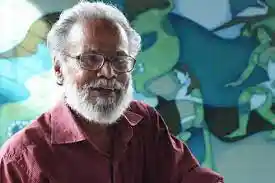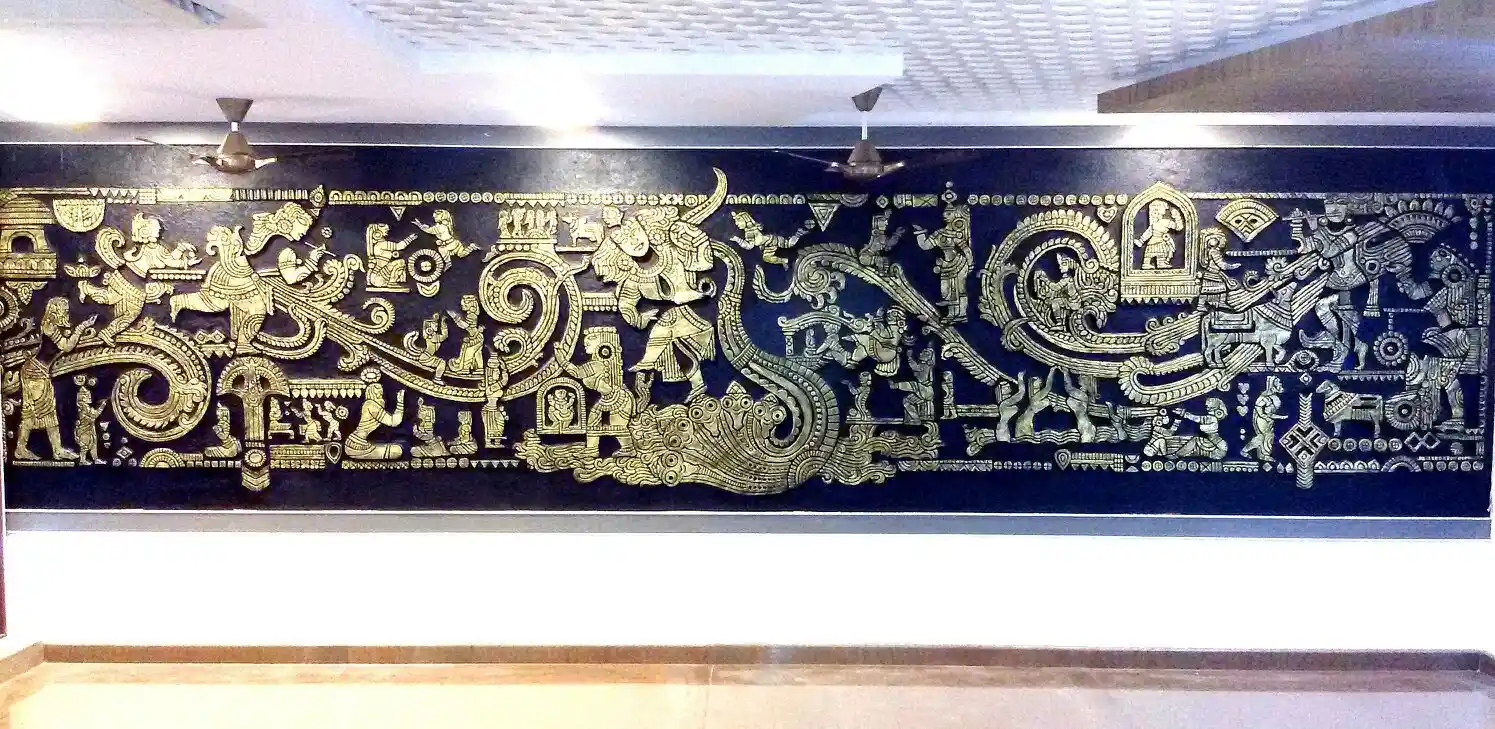A Vivid Prisma
"His palette has a riot of colours, and the bristles of his brush have always given vent to his artistic expressions with finesse"

What brilliance looks like! Image Source: Kerala.com
Artists have been the foremost genus of any civilization waving the flag of revolution. Art is an independent form of expression, and the most powerful. Sometimes, the brush is a blossoming flower and sometimes, it is a dagger plunged into your heart.
C. N. Karunakaran is an artist of such kind; bringing modernity to liberated India. In 1940, he was born in Brahmakulam, Kerala. That an artist is an indomitable spirit, he proved it when he was eleven. Due to the complications of typhoid, he was crippled. The treatment caused him to leave the academics. He entered the world of art at the Government College of Fine Arts (Chennai) under the tutelage of K. C. S Paniker and D. P. Roy Choudhury. He achieved two diplomas, in design and advanced painting. He was a designer at the Madras Design Demonstration Centre.
To add to his aesthetic creations, he tinted seashells. The next step he took after finishing his training was to enter the sphere of the film industry. He rolled advertisement films. He worked as an art director in some of the films in Malayalam. He travelled to Kochi in 1970 and joined the Kerala Institute of Arts or Kalapeetom. He started his journey there as an art instructor but continued his practise of art within the regional chassis.
The Kerala Institute of Arts gave him an opening to come across several artists, Kanayi Kunhiraman, Namboothiri, A. C. K. Raja, M. V. Devan, K. P. Soman, C. N. Sreekantan Nair, Pattathuvila Karunakaran, M. Thomas Matthew, M. K. Sanu, T. Ramachandran.
After spending three years there, he took a leap in his career. He inaugurated his first privately-owned art gallery, Chitrakoodam, in Kerala. Sadly, it ran for 4 years only. He was working with another privately-owned gallery, Ochre, in Kochi.
His etchings made their way in various publications like Oxford University Press' Aithihyamala or the Lore and Legends of Kerala. His illustrations were showcased in Kerala Kaumudi Weekly, Manorama Weekly, Malayalanadu, Deshabhimani Weekly, Kalakaumudi, Chintha, Mathrubhumi Weekly, Bhashaposhini, Kumkumam, India Today.
From desi to videsi, he was invited, participated in exhibitions of Embassy of India in Washington, Virginia, Asian Art Gallery, Rio de Janeiro, Sao Paulo, Brasilia, Paraty, Vienna, and Asian Art Gallery, Kuwait.
As one of the earliest projects, he shouldered the restoration of the panorama of Guruvayur temple. While his involvement with the Madras Design Demonstration Centre, he worked for the upliftment of the handicraft industry and created many literary works in form of books.
As an art director, his filmography includes Akkare, Purushartham, Ashwadhamavu, Ore Thooval Pakshikal, Alicinte Anveshanam. His solo exhibitions were held at Jehangir Art Gallery, Taj Art Gallery, The Gallery Leela, Galeria Ralino, ABC Art Gallery, Art Konsult Gallery, Nehru Centre, Adithi Indian Cuisine, and Travancore Gallery.
He was awarded at Lalith Kala Akademi, Kerala, thrice (1971, 72 and 75). He was nominated at the P. T. Bhaskara Panicker Award (2000) and Malayattoor Ramakrishnan Award (2003). He was awarded the highest honour of the Akademi in 2009, Raja Ravi Varma Puraskaram.
Due to cardiac failure after a prolonged period of sickness, he passed away on December 14, 2013, at Kochi.

The panorama of Guruvayur Temple; Image Source: Mural Paintings of Kerala


